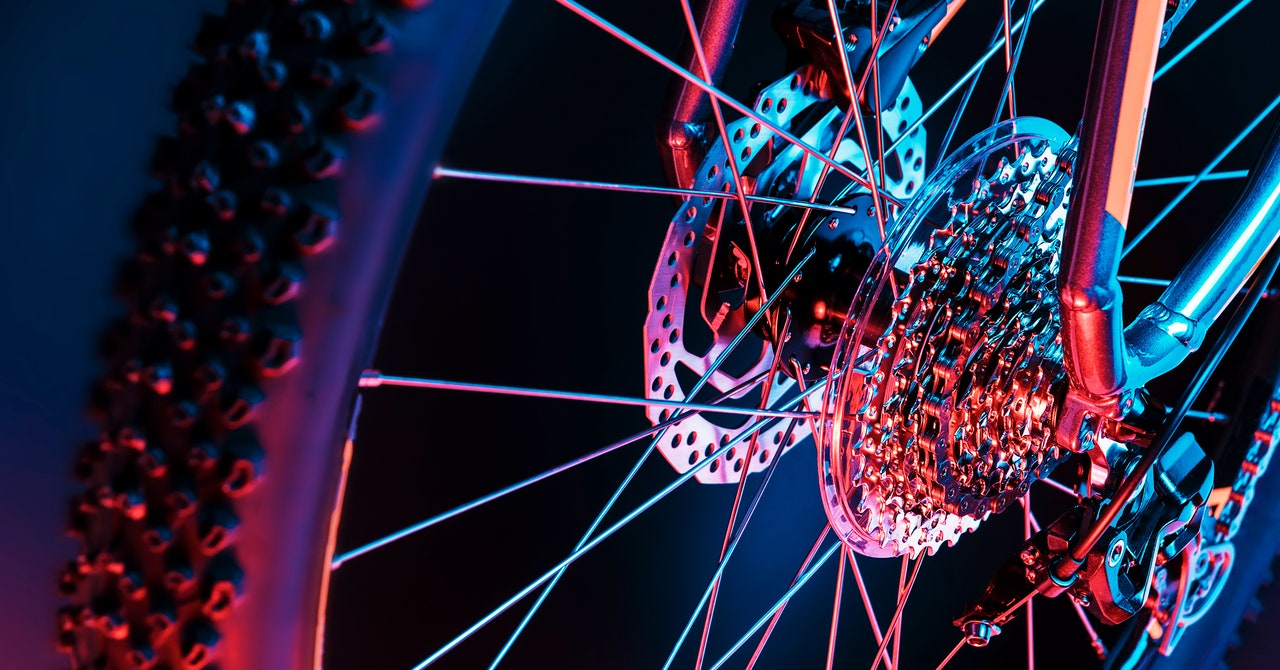
Most bicycle brakes are activated by a set of cables attached to the brake levers, and most issues with your brakes can be solved by adjusting the tension of those cables. They will also need periodic adjustments to keep them working properly.
To test the tension of your brake cables, give your brake levers a squeeze. If they touch the handlebar grips or get close enough to crush a finger slipped underneath, you need to increase your cable tension. On the flip side, if only the slightest pressure on the levers causes your brakes to clamp down—or if your brake pads rub when you spin the bike’s wheel without squeezing the brake lever at all—then you need to decrease your cable tension. Usually, cable tension can be changed by twisting the barrel adjuster found at the point where the cable meets the hand lever. There are tons of easy-to-follow YouTube videos that show you how to adjust brake cables.
There are a few types of brakes, but you’re most likely to have rim brakes or disc brakes. The most common rim brakes—V-brakes or caliper brakes—pinch both sides of the wheel rims from the top of the wheel. Disc brakes don’t touch the rim at all and instead use small calipers to pinch CD-sized discs mounted in the center of each wheel. Disc brakes offer superior stopping performance, but they can be fussy to maintain.
Fancier disc brakes use hydraulic mechanisms to pinch the discs. While hydraulic brakes are not impossible to maintain at home, they’re a bit more than most people want to tackle. Remember to periodically get the lines checked and refilled with fresh fluid at a local bike shop. And if the brake fluid reservoir on your handlebars looks low, take it to a bike shop soon.
Less common are coaster brakes, which don’t use levers and are instead activated by pedaling backward. These are difficult to adjust yourself and are dangerous when not properly adjusted, so take your coaster brake to a professional.
Brake pads wear out gradually as you use your bike and are easily replaced. You just need to know what size or type of brake pad to shop for. The writing on the worn pads should give you a hint about what to buy. Brake pads are largely universal, though their mounting systems vary. The beginning of this video explains the differences.
Swapping out worn V-brake pads for new ones takes no more than a few minutes, and all you usually need is the right size hex key. We recommend Park Tool’s hex wrench ($14) with the three most common key sizes on it. It will take you a bit longer to replace disc brake pads because the brakes are smaller and more intricate; this video shows a few ways to approach pad replacement. In both cases, you should readjust your cable tension after putting new pads on.
You’re going to need to clean those brake pads periodically too. Use an old toothbrush or a shop towel ($3) to get into the gap between the brake and either the rim or the disc, and use some brake cleaner ($10) to remove any buildup.






